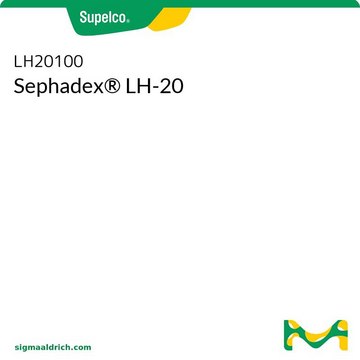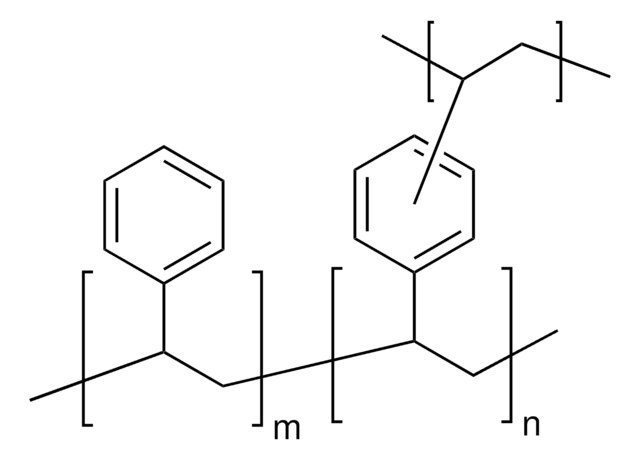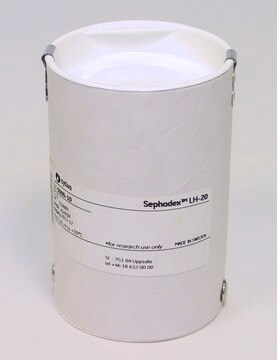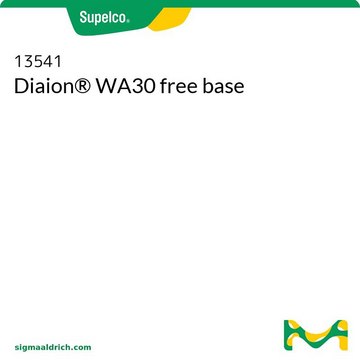About This Item
Produtos recomendados
forma
solid
Nível de qualidade
embalagem
pkg of 500 g
técnica(s)
HPLC: suitable
LPLC: suitable
ion chromatography: suitable
thin layer chromatography (TLC): suitable
área da superfície
~500 m2/g
matriz
styrene-divinylbenzene
Grupo ativo da matriz
polymer
tamanho de partícula
250-850 μm
tamanho de poro
~1.30 mL/g pore volume
260 Å mean pore size
densidade
1.01 g/mL at 25 °C (true wet)(lit.)
técnica de separação
reversed phase
InChI
1S/C10H12.C10H10.C8H8/c2*1-3-9-7-5-6-8-10(9)4-2;1-2-8-6-4-3-5-7-8/h3,5-8H,1,4H2,2H3;3-8H,1-2H2;2-7H,1H2
chave InChI
NWUYHJFMYQTDRP-UHFFFAOYSA-N
Procurando produtos similares? Visita Guia de comparação de produtos
Categorias relacionadas
Descrição geral
Aplicação
- Diaion® HP-20 was used as adsorbent for open column chromatography.
- Diaion® HP-20 was used in purification of glucosides using TLC and HPLC analysis.
Outras notas
Informações legais
Código de classe de armazenamento
11 - Combustible Solids
Classe de risco de água (WGK)
WGK 3
Ponto de fulgor (°F)
Not applicable
Ponto de fulgor (°C)
Not applicable
Equipamento de proteção individual
Eyeshields, Gloves, type N95 (US)
Escolha uma das versões mais recentes:
Já possui este produto?
Encontre a documentação dos produtos que você adquiriu recentemente na biblioteca de documentos.
Os clientes também visualizaram
Nossa equipe de cientistas tem experiência em todas as áreas de pesquisa, incluindo Life Sciences, ciência de materiais, síntese química, cromatografia, química analítica e muitas outras.
Entre em contato com a assistência técnica











